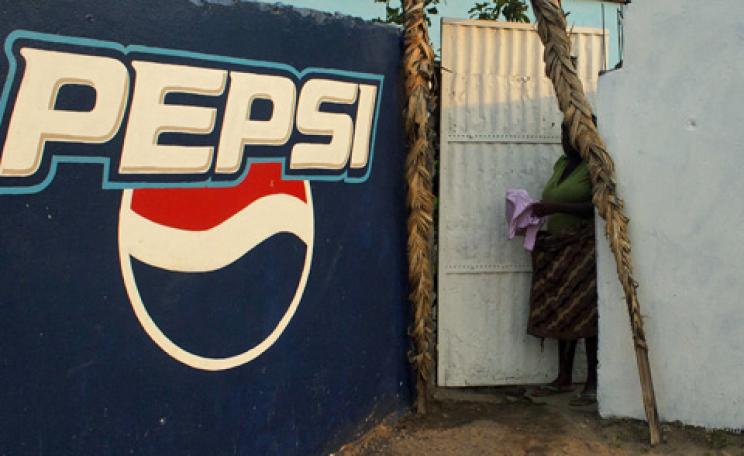A 10 per cent loss of crops due to asthetics is considered a good year by some farmers
Huge amounts of perfectly edible, nutritious fresh produce is wasted for not meeting cosmetic standards.
Professor Davey Jones of Bangor University has been conducting studies on farms in East Anglia and has been shocked by just how much food waste is still edible.
'I’ve walked through fields after harvest and 90 per cent of the wasted crop is still worthwhile. Supermarkets have pushed the prices so low for vegetables sometimes it’s not economically viable for farmers to even harvest the good stuff and entire fields get ploughed in - it’s heart breaking.'
Much of this waste occurs due to produce not meeting the ‘technical specifications’.
These ‘specs’, as they are referred to within the industry, stipulate the size, shape and skin finish of produce retailers will purchase and at what price. The grading system, set by EU and DEFRA guidelines, is based on aesthetics and bares no correlation to taste and nutritional value. It’s an oxymoronic set-up well recognised by growers.
'Unlike what most people seem to believe the eating quality of a potato is not indicated by skin finish but by variety and age,” says Tony Bambridge, managing director of B&A farming. 'There’s a perception the skin of a potato should be as pure as dripping snow – bright, shiny and defect free. It’s an ideal that’s almost impossible to achieve.'
Weather ruins perfect veg
All crops pose unique challenges in terms of meeting the ‘specs’. Harsh frosts discolour cauliflower florets. Common scab blemishes potatoskins. Courgettes and cucumbers sometimes grow more boomerang-like than ruler straight.
The most common variable behind these quirks is the weather – the conditions in Spring often dictate whether a farmer will make a profit on a particular crop that year or not.
Jamie Chambers, Technical Manager at TH Clements & Son, a large-scale grower based in Boston, Lincolnshire, says last year the firm lost 100-150 acres of cauliflowers due to the harsh winter. ‘Lost’ is a debatable description as much of the crop would have still been edible but because the florets were tinged yellowy-brown they therefore couldn’t be sold.
'And that’s fair enough,' says Chambers. 'DEFRA and EU standards are in line with consumer expectation. Discoloured cauli’s are still good for eating but no one would buy them. That’s the reality.'
Most large-scale growers such as TH Clements & Son aim for 10 per cent or less crop wastage but with increasingly erratic weather this target is often not met. 'It’s swings and roundabouts,” Chambers continues. 'We lost a lot of caulis last year but this years been amazing for broccoli. We harvested more tonnes per acre than expected and lost only 50 out of 700 acres.'
Fields of wasted crops
On a spreadsheet this appears an efficient margin. But visualise 50 acres of edible food left rotting in the fields at a time when the UK is supposed to be striving for a more sustainable food system, and it’s apparent there’s still some way to go.
Chris Marshall, Head of Agriculture at QV Foods, says key to reducing waste – and is what most farmers are already doing – is to have different clients who’ll take produce of varying quality. For example QV Foods grade one potatoes go to premium supermarket lines, grade two go into value packs, three to food processors and anything less is sold for cattle feed.
Not all crops lend themselves to this tiered system and if they don’t make grade one or two – which discoloured cauliflower florets wouldn’t – there’s no other market for them.
Marshall says there’s an element of ‘interpretation’ in the specs that correlates to, 'The usual market forces of supply and demand. If it’s been a good year they become more stringent, a bad year more lenient.' He thinks the specs are 'realistic' but confirms good food continues to be wasted.
'There’s no doubt we throw away perfectly edible potatoes,' he says. 'But if the specs were lowered and sales dropped that would be counter-productive…Consumers need re-educating that cosmetic damage doesn’t effect eating quality. Who’s responsibility that is, is debatable.'
Supermarkets only partly to blame
Rather than lambast supermarkets for imposing unobtainable super-model-esque veg dimensions, like QV Foods most of the large-scale growers The Ecologist spoke to believed retailers were responding to consumer demand.
'There’s a disconnect between what people say and what they actually do,' explains Nick Turnbull, Technical Manager at Branstons, a large-scale grower, packer and distributor of potatoes. 'People shop with their eyes. We say of course bruising and blemishes doesn’t matter but then walk into Tesco and buy the brightest looking pack. We all do it.'
This view is shared by farmer Tony Bambridge although he does recognise supermarket buying trends actively shape consumer expectations. 'Retailers play an incredibly powerful role as what they put in front of consumers changes the direction of what growers can sell…I understand why they do it. Unless there’s a tangible benefit to the consumer, why would they buy scabby potatoes?'
Half-priced ugly apples
David Mitchell is the fruit buyer at Waitrose behind the stores recent line of weather-blemished apples. Although far from a perfect solution (bags of twelve pieces of fruit were sold for the price of six), it meant growers were able to at least make some return on their harvest while consumers were rewarded with a double portion for having faith weather blemished didn’t mean a poorer quality eat.
'We sold 50 per cent more of that line than expected which is encouraging,' says Mitchell. 'But overall customers say misshapen vegetables are fine but when they go to the fixture they pick the most perfect looking one’s – we’ve got footage of it…For consumers to buy imperfect produce, they’re still has to be some sort of obvious gain – a discount or larger quantity.'
For small-scale growers servicing box schemes and farmers markets consumer expectations are a little more flexible.
Essex located organic farmer Sarah Green believes her customers value, 'Freshness, quality and taste' above all else but says appearances do still matter.
'How things look is important but I don’t not sell produce just because it’s a bit big, small or a slightly unorthodox shape – thankfully my customers see beyond that.'
Decline in home gardening
Accepting a bulbous parsnip is as good as its streamline counterpart is one thing, but for consumers – even of the organic farmers market variety – produce with holes and bruises is still a no-no.
Martin Mackey of Ripple Farm Organics believes this won’t change until food becomes a lot more expensive and people start growing their own food.
'We’re conditioned to want perfection,' he says. 'It’s not until you see it growing for yourself you know otherwise. Until we have a revolution of growing in towns and cities, or food becomes so expensive there’s no choice, I can’t see people buying holey leaves or forked parsnips.'
And until this happens retailers and growers will strive to sate consumer’s subconscious desire for cosmetic perfection and good quality, nutritious food will continue to be wasted.
As Professor Davy Jones concludes. 'At a time when we’re supposed to be moving towards food security and reducing green house gas emissions we’re still doing things based on market as opposed to ecological forces. It’s crazy.'
| READ MORE... | |
 |
INVESTIGATION How green are tetrapak food cartons? They're becoming more and more common - wrapped around everything from milk to chickpeas. But just how environmentally friendly are composite cartons compared to the good, old-fashioned tin or jar? |
 |
HOW TO MAKE A DIFFERENCE Campaign: Fighting food waste through feasts A campaign to force food manufacturers and retailers to reduce their waste is coupled with an innovative celebration of the rejected food |
 |
GREEN LIVING Cut down on food waste: making the most of your Christmas bird Have you maximised your festive leftovers potential this year? Here are our top tips for getting the best out of your turkey for Boxing Day and beyond - and a recipe for the perfect roast chicken |
 |
HOW TO MAKE A DIFFERENCE CAMPAIGN HERO: Lindsay Boswell of community food network FareShare Inspiring businesses to reuse food that would have otherwise be sent to landfill, the pioneering group FareShare collects and distributes it to homeless shelters: feeding the needy, saving CO2 and diverting waste from landfill |
 |
REVIEW How to Make and Use Compost: The Ultimate Guide Drawing from 40 years of composting experience, Nicky Scott's latest book will inspire confidence in beginners and give new techniques to veteran composters |








